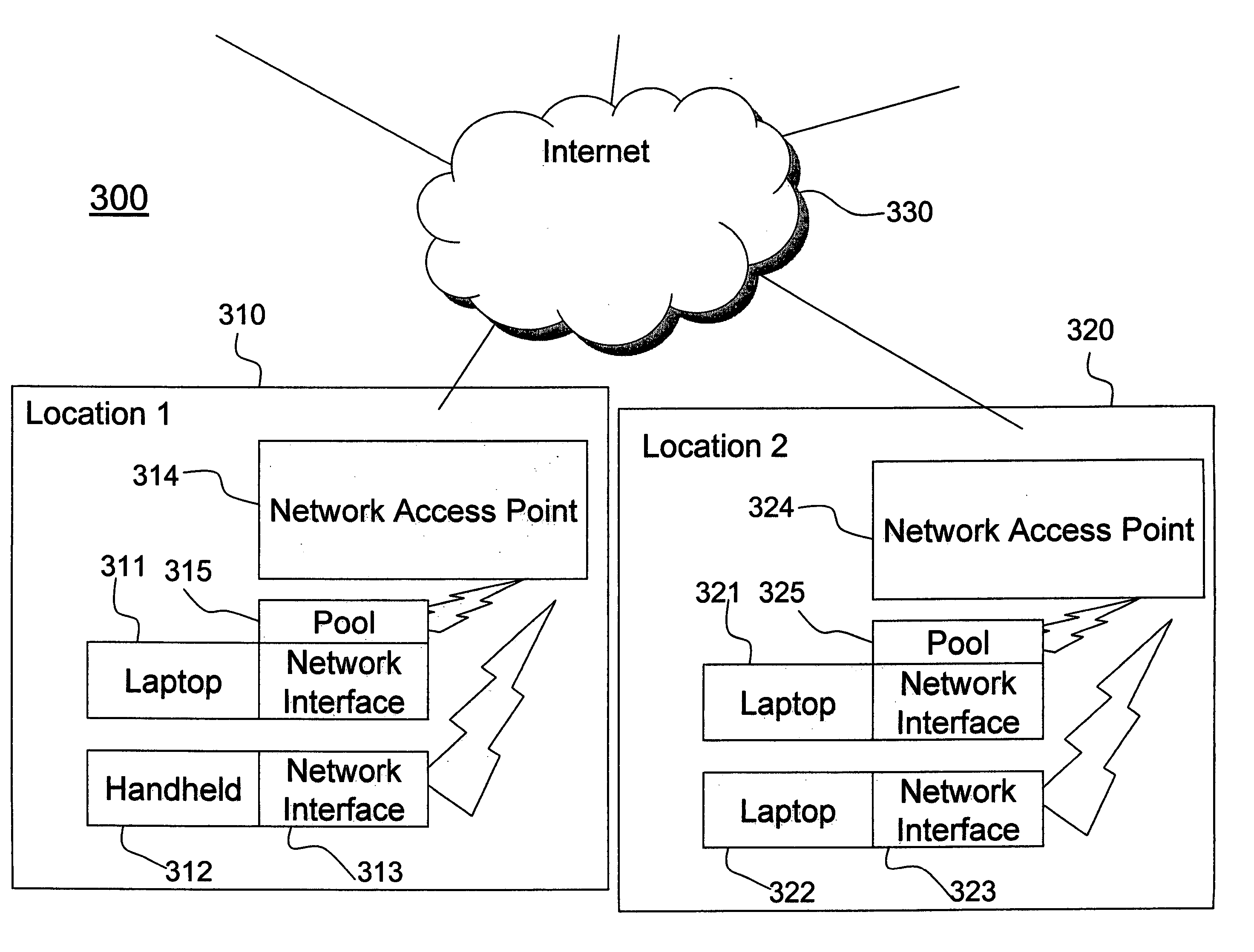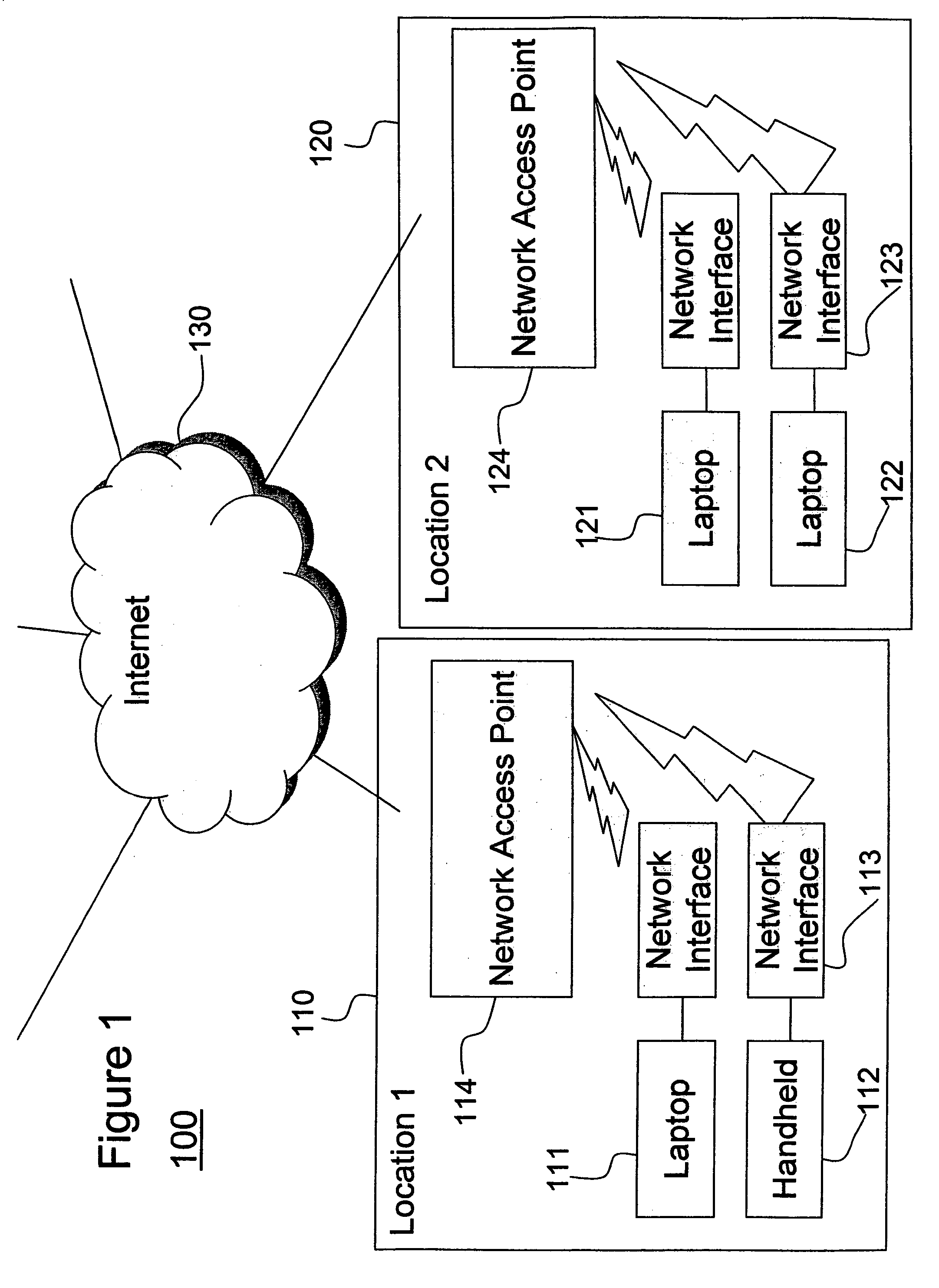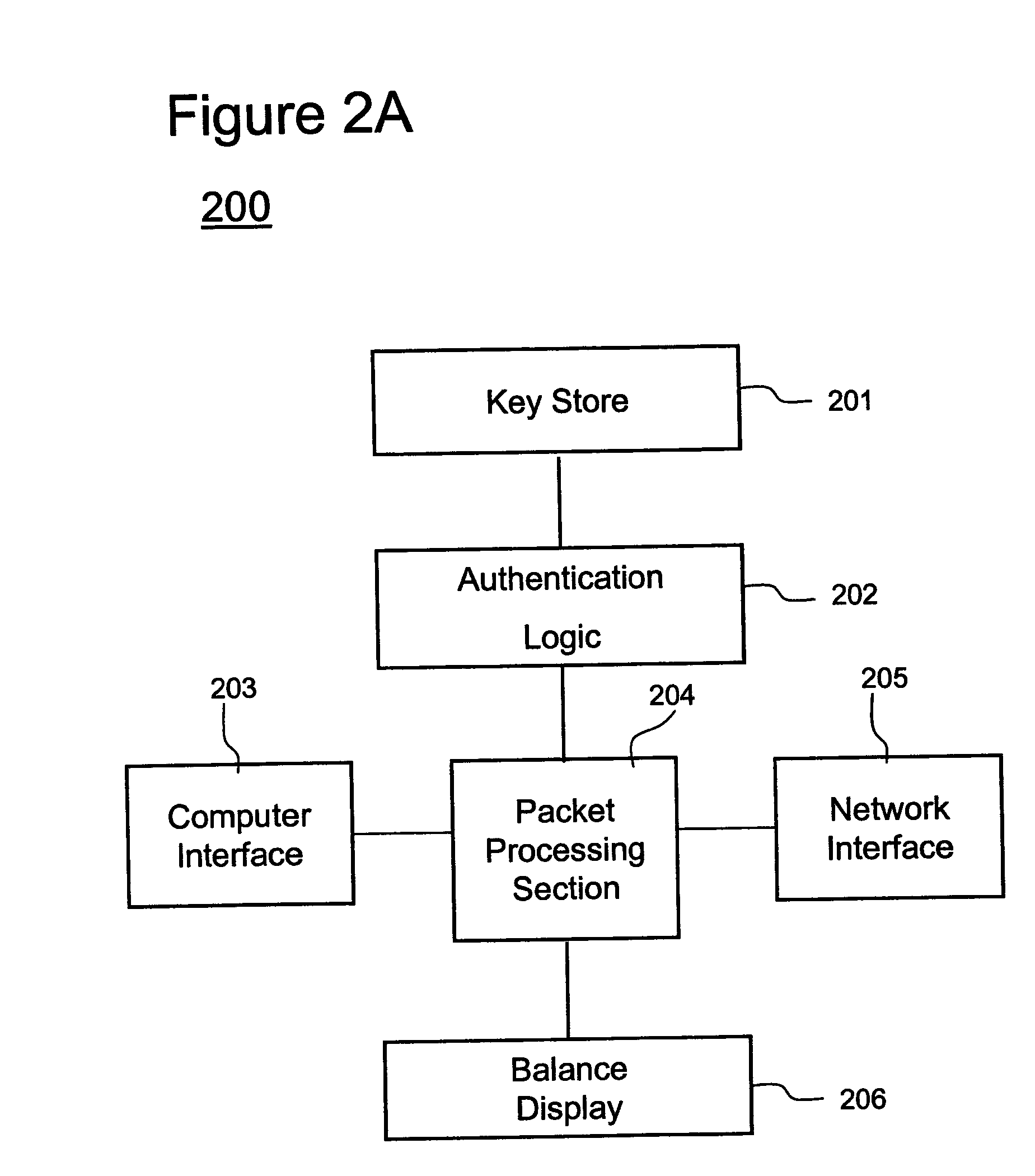Method and system for privacy in public networks
a privacy and public network technology, applied in the field of public network privacy preservation, can solve the problems of privacy of users of public wifi networks, ineffective security mechanisms, and serious problems of the initial security mechanism of 802.11 networks, and achieve the effects of improving awareness of privacy issues, simple to understand, and convenient deploymen
- Summary
- Abstract
- Description
- Claims
- Application Information
AI Technical Summary
Benefits of technology
Problems solved by technology
Method used
Image
Examples
Embodiment Construction
[0066] Referring now to the drawings, and more particularly to FIGS. 1-5, there are shown exemplary embodiments of the method and structures according to the present invention.
[0067] Exemplary Embodiment
[0068] Service providers have several objectives. At a minimum, the service provider must be able to show a profit. They must be able to sign up a large number of customers to cover their large infrastructure costs.
[0069] Other desirable objectives include the ability to offer their customers a choice of service plans and a choice of payment options. It is also important for service providers to prevent the theft of service by non-paying “customers”. (Generally, most service providers settle for limiting the amount of theft rather than outright prevention, since cost of outright prevention may outweigh the cost of tolerating limited theft). Service providers also want to design some affinity into their services so that customers incur a cost to switch to a competitor. Affinity and...
PUM
 Login to View More
Login to View More Abstract
Description
Claims
Application Information
 Login to View More
Login to View More - R&D
- Intellectual Property
- Life Sciences
- Materials
- Tech Scout
- Unparalleled Data Quality
- Higher Quality Content
- 60% Fewer Hallucinations
Browse by: Latest US Patents, China's latest patents, Technical Efficacy Thesaurus, Application Domain, Technology Topic, Popular Technical Reports.
© 2025 PatSnap. All rights reserved.Legal|Privacy policy|Modern Slavery Act Transparency Statement|Sitemap|About US| Contact US: help@patsnap.com



